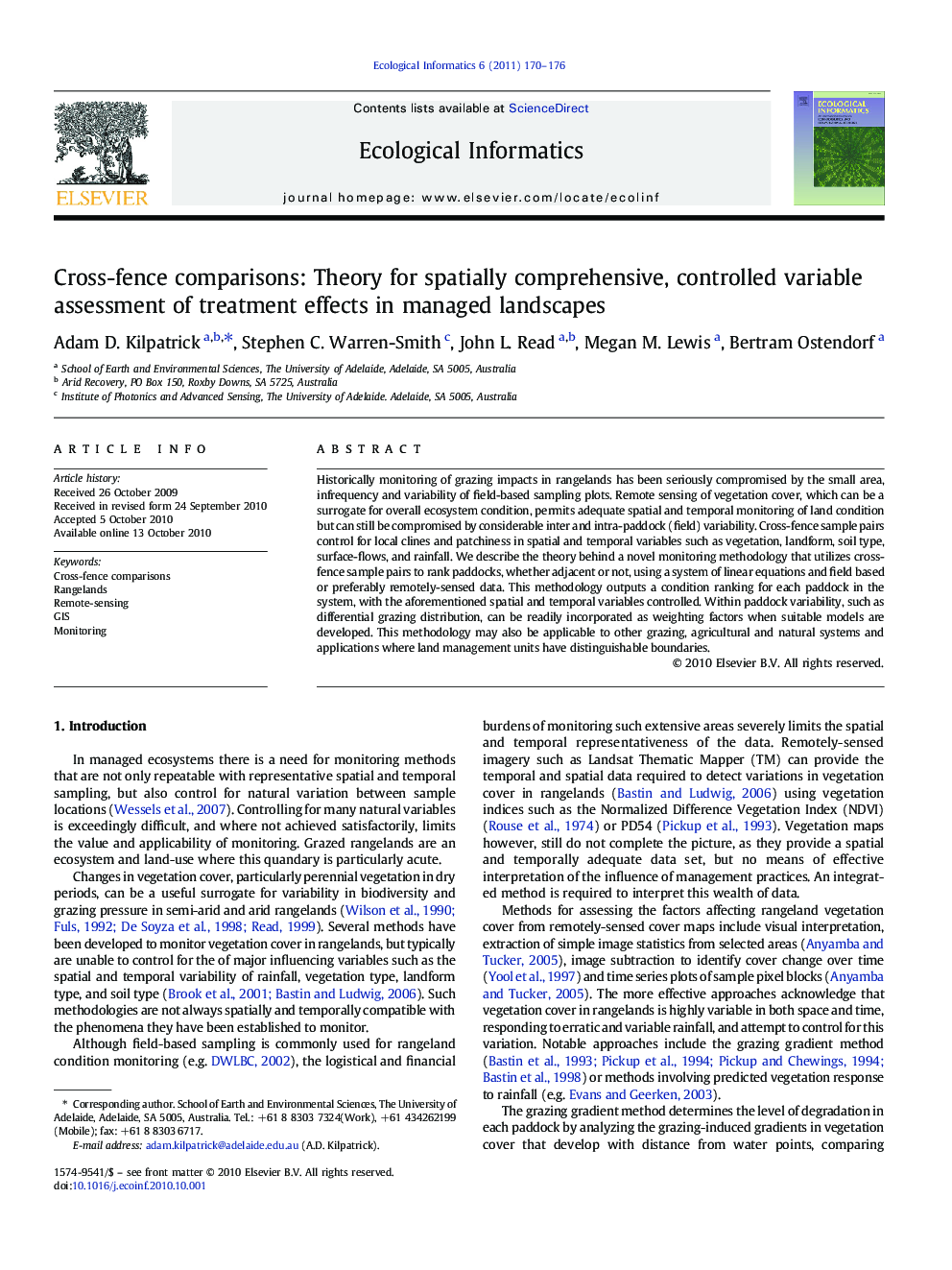| Article ID | Journal | Published Year | Pages | File Type |
|---|---|---|---|---|
| 4375176 | Ecological Informatics | 2011 | 7 Pages |
Historically monitoring of grazing impacts in rangelands has been seriously compromised by the small area, infrequency and variability of field-based sampling plots. Remote sensing of vegetation cover, which can be a surrogate for overall ecosystem condition, permits adequate spatial and temporal monitoring of land condition but can still be compromised by considerable inter and intra-paddock (field) variability. Cross-fence sample pairs control for local clines and patchiness in spatial and temporal variables such as vegetation, landform, soil type, surface-flows, and rainfall. We describe the theory behind a novel monitoring methodology that utilizes cross-fence sample pairs to rank paddocks, whether adjacent or not, using a system of linear equations and field based or preferably remotely-sensed data. This methodology outputs a condition ranking for each paddock in the system, with the aforementioned spatial and temporal variables controlled. Within paddock variability, such as differential grazing distribution, can be readily incorporated as weighting factors when suitable models are developed. This methodology may also be applicable to other grazing, agricultural and natural systems and applications where land management units have distinguishable boundaries.
